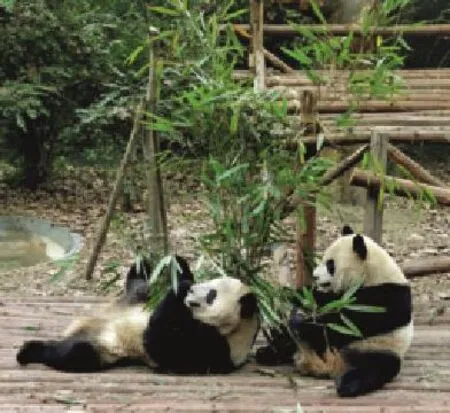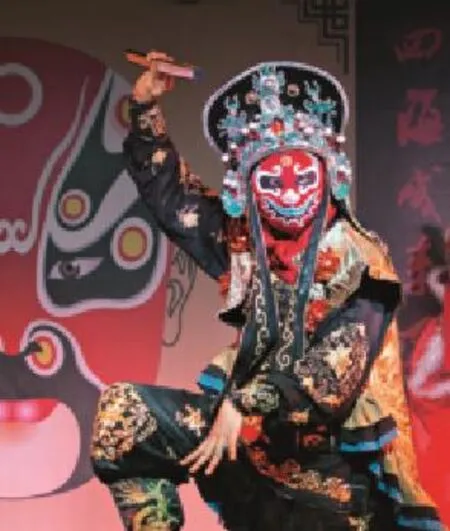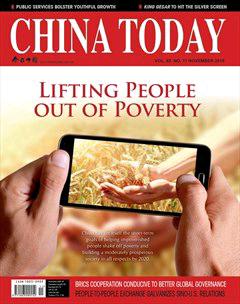Chengdu– Capital of West China
By BILL BROWN
Chengdu– Capital of West China
By BILL BROWN

Around 80 percent of China’s giant pandas live in Sichuan.
IN most of China, Sichuan cuisine means food with a few peppers tossed in. In Chengdu, according to the 2011 “UNESCO City of Gastronomy,” they cook peppers with a bit of food tossed in. And the people are as fiery as their food.
Chengdu is one of the few major Chinese cities to have remained in the same place, under the same name, for over 2,000 years – but the Sichuanese are far from staid.
Even today, residents of “West China’s Capital” are known for being both modernist and traditionalist. A Sichuanese professor told me, “We never wash our woks, so the sauce improves over time. One Chengdu family hasn’t washed their wok in 200 years!” he laughed, adding, “Their family sauce is older than your homeland!”
When our family passed through Chengdu in 1994 on our drive from Tibet back to Xiamen, I’d only planned to stay a night or two, but we were so enchanted by the place, the people and the peppers that we stayed a week.
I was surprised to learn that Sichuan became West China’s “Land of Plenty,”as well as a great commercial and cultural center, because of a 2,200-year-old engineering marvel that in some ways surpasses even modern technology. The Dujiangyan Irrigation Project, built in 256 BC, not only halted the devastating annual floods but, to this day, irrigates over seven million hectares.
Dujiangyan is not a dam but a unique structure that diverts some water to felds but allows most to fow freely. This enables water transport, as well as the natural migration of fsh. In the U.S., environmentalists are destroying centuryold dams and local agriculture as well, in efforts to protect endangered fish or frogs. Sichuan’s 2,200-year-old UNESCO World Heritage Site is a lesson on how to steward our fragile little planet while improving, rather than destroying, economies and livelihoods.
Dujiangyan made Sichuan the “Birthplace of China” because its agriculture fed the vast armies of Emperor Qin Shi Huang (259-210 BC), who unified China in 221 BC and started building the 10,000-li (5,000 km) Great Wall the following year. And each year on Tomb-Sweeping Day (usually April 5, my birthday!) locals dress in ancient costumes and read eulogies in commemoration of its builders.
Chengdu was in the Tang Dynasty (618-907) one of China’s most important commercial cities, but also well known for its arts, sciences, and education. In 141 BC, local governor Wen Weng established China’s first public schools in Chengdu. In the Tang Dynasty, Chengdu attracted famous artists and poets such as the legendary romantic poet Li Bai. To this day, Chengdu is known for its arts, including Zaju Opera – a lively mixof singing, dancing, and poetry frst performed in Chengdu – and Sichuan Opera, with its amazing Bianlian (face changing) and fire breathing (though after eating Sichuan food, I, too, breathe fre).
For around 2,000 years, Chengdu was also known as the Brocade City because the richly decorative shuttlewoven silk fabric it produced was worn by royalty. Today, you don’t have to be part of the elite to wear Chengdu brocade. A fascinating place to buy it is Jinli Street, which has been a popular commercial thoroughfare for around 2,300 years.
The buildings along Jinli Street, with their wooden fronts and balconies festooned with festive Chinese lanterns, refect west Sichuan architecture. On this lively street are restaurants, classic teahouses with bamboo chairs and wooden tables, handicrafts and specialty shops, and of course vendors hawking selections from Chengdu’s 100 or more street snacks. But for those who prefer more modern shopping, there’s downtown’s Chunxi Road which, built in 1924, is brand new by Chengdu standards.
It is no surprise that China’s “breadbasket” is famous for cooking. I thought it had only two flavors, hot and hotter, but Sichuan chefs claim there are seven: sweet, sour, salty, bitter, spicy, and tongue-numbing. Many dishes combine several flavors in one. Twice-cooked pork, Mao Zedong’s favorite in his twilight years, is salty, sweet, spicy and aromatic – not only tongue-numbing but mind-numbing.
Sichuan cuisine gets its seven favors through almost 40 cooking techniques, including frying, stewing, and sautéing, and dozens of ingredients, including garlic, ginger, scallions, star anise, bean paste, fermented glutinous rice wine, mushrooms, fungi, and many more.
Foreigners’ favorites include kung pao chicken, Sichuan beef, braised eggplant, barbeque pork, chicken and sweet corn soup and hot and sour soup, Sichuan shrimp, and of course Sichuan’s most famous dish, the tongue-numbing mapo tofu, cooked by a pockmarked lady (mapo) over a century ago.
I could have happily spent a month or two in Chengdu, but we also wanted to see giant pandas (80 percent of which live in Sichuan) and China’s largest monkey reserve (I was born in the year of the monkey, so felt right at home there). But Sichuan’s most famous site is Mt. Emei.
Only a two-hour train ride from Chengdu, Mt. Emei is one of China’s four holy mountains, and site of the country’s first Buddhist Temple. I especially like Jiulao Cave Scenic Area and the Qingyin Pavilion, and also the ancient plank path along the cliffs. It feels like a spacewalk, and the 200 plant species there which are found nowhere else on the planet add to Emei’s otherworldliness.
The 71-meter-high Leshan Giant Buddha, begun in 713 to protect boatmen from the raging river, took 90 years to carve out of the cliff. Few visitors know that the statue has survived for more than 1,000 years due to an ingenious drainage system in the Buddha’s hair, shoulders and garment folds that carries water away before it can erode the statue.
Whether irrigating entire provinces or carving colossal Buddhas, Sichuanese build for the ages.
I was happy to learn that Leshan is also famous for its cooking. In quaint little Xiba Old Town, about 20 km from Leshan City, we feasted on Bobo Chicken, Qiánwèi Flatcake and Xiba Tofu, which is used to create more than 100 dishes. Even now, 20 or more years later, my mouth still waters at the memory.
I hope someday to drive around China again and write about its two decades of changes, but next time around, I’m spending an entire month in Sichuan!

The amazing Sichuan Opera – Bian Lian (face changing).

The couple taste Sichuan’s most famous dish – the tongue-numbing mapo tofu.
DR. BILL BROWN is a professor at the Xiamen University MBA Center and Academic Director of its OneMBA program.

